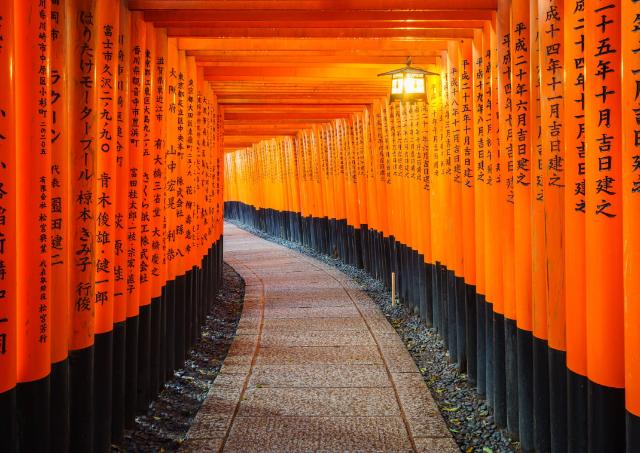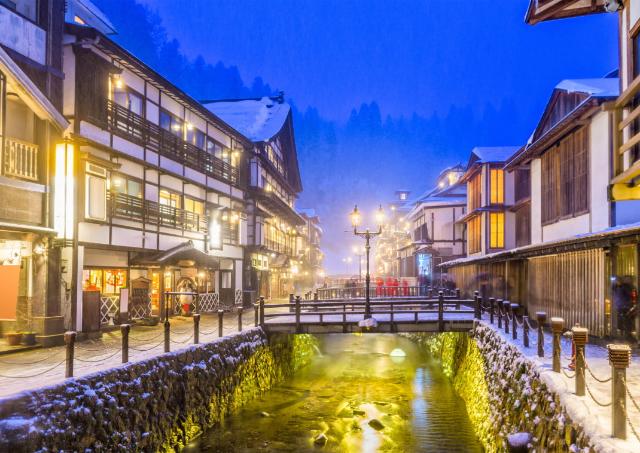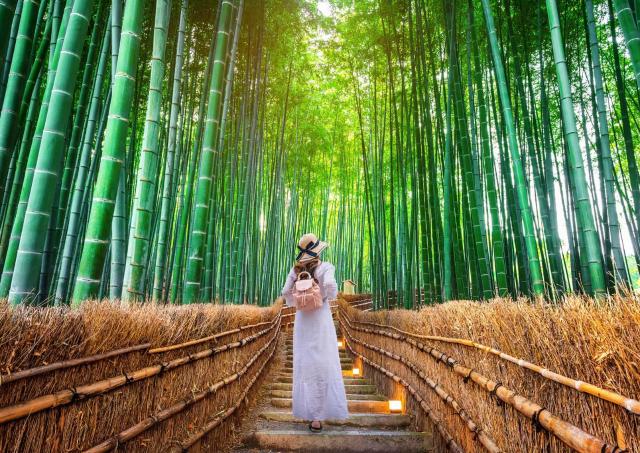Off the Beaten Path in Japan: 5 Prefectures That Will Surprise You
All ready for the trip of a lifetime? That Japan trip itinerary can be exhilarating to review. Tokyo here, Kyoto there, Osaka at night; what a thrill to finally get to see all these places you’ve only seen in pictures!
While the top spots are top spots for a reason, we’d like to recommend a few that tourists visit far less and, therefore, offer rare experiences and insights into the lives of Japanese people, their culture, and their surroundings.
We’ve compiled a list of the ones we believe get the least attention but should be at the top with the rest of the reputable giants.
You may have never even heard of some of these, so let’s get to it!
5. Shizuoka
While you’d think a prefecture that possesses half of Mt. Fuji would be an easy itinerary pick, it’s the lakes of the other half belonging to Yamanashi prefecture that tend to get picked first.
While that may be understandable for tourists in a hurry, Shizuoka is a long prefecture that covers a great deal of the central Pacific coast of Honshu, Japan’s main island. Just under an hour from Tokyo, Shizuoka City, the prefectural capital, is an ideal base for visiting Fuji view spots located in and around Fuji City and not limited to the beautiful bay-side Fuji views seen from the Shimizu Port area.
But there’s another side to Shizuoka that deserves more attention: its world-class tea plantations. As the largest tea-producing region in Japan, Shizuoka offers lush green tea fields with panoramic views of Mt. Fuji in the background—a truly iconic sight. Head to Makinohara Plateau or Obuchi Sasaba for photogenic landscapes, and stop by a local tea farm for tastings, factory tours, and hands-on tea-picking experiences. Whether you're a casual tea lover or a dedicated matcha fan, these tranquil plantations offer a refreshing break from the tourist trail.
At just over the border from Kanagawa prefecture, Shizuoka’s famous Izu Peninsula with its bubbling hot springs, pristine nature, and a southern beach that rivals even that of Okinawa’s prime spots, it’s no wonder Izu sits so well on the tongue of locals eager for a vacation.
In the prefecture’s western side near neighbouring Aichi capital Nagoya, its largest city of Hamamatsu is a town synonymous with classical music as Yamaha’s hometown and Warsaw, Poland’s sister city. With gorgeous sand dune beaches known for sea turtle breeding and kite festivals, Hamamatsu is as lovely as it gets when exploring many of the spots tourists never see.
4. Shimane
Our fourth pick lies quietly on the Sea of Japan side in the western part of the country just north of Hiroshima prefecture. Due to its lack of shinkansen (bullet train) connection, Shimane is a prefecture typically lost on the minds of foreign visitors. Still, it’s a stunning place of lakes, hot springs, and significant cultural history.
The capital Matsue, which sits just outside of Tottori prefecture, sits on the east side of prefectural Lake Shinji. Aside from its breathtaking sunsets over the lake, Matsue is regularly visited by castle enthusiasts as Matsue Castle is one of only twelve of the country’s original samurai castles of centuries past. Beautiful all year round, the landmark black castle sees all seasons and comes to life in the spring surrounded by cherry blossoms.
On the southern side of Lake Shinji, you’ll find Matsue’s hot spring village of Tamatsukuri Onsen which lines the Tamayu River with hot spring hotels and riverside foot baths. It’s a lovely place to stay and relax well away from any hustle and bustle. It’s a favourite hot spring getaway for Hiroshima City residents as well.
The west side of the lake bends along Izumo City – one of the most significant sites for Shinto and shrine seekers. Izumo Taisha is considered the most important shrine of Japan as it’s known as Japan’s oldest and base of operations for Shinto deities. A stunning set of complexes, Izumo Taisha is often referred to as a place all people who practice Shinto should visit in their lifetime.
Finally, for those who want to see pristine coast while in the region, the Oki Islands north of the prefecture are a ferry ride away and full of sites of breathtaking beauty with the coastal green cliffs of Nishinoshima often gazed upon with utterances of Ireland. Nature lovers in the area would certainly regret missing a trip to these island wonders.
3. Aomori
On the northern tip of Honshu, visible to the naked eye from southern Hokkaido, Aomori prefecture is well-known for being the landing site of the most snowfall on Earth. In the warmer seasons, Aomori is an ideal zone for those wanting to escape the heat of Tokyo.
Nature lovers will find Aomori especially rewarding. The Oirase Gorge, flowing from Lake Towada, is one of Japan’s most scenic river valleys. With its mossy rocks, cascading waterfalls, and crystal-clear streams winding through lush forests, it’s a dream for hikers and photographers alike—especially in autumn. Nearby, Shirakami Sanchi, a UNESCO World Heritage Site, protects one of the last remaining virgin beech forests in East Asia. This untouched wilderness offers a rare chance to explore Japan’s raw, ancient landscape, home to native wildlife and tranquil trekking routes.
Surrounding the Mutsu Bay, the prefecture connects to the prefecture of Hokkaido by the world’s longest undersea bullet train tunnel. Known nationally as the host of the Nebuta Festival, a summer lantern float festival recognized for its impressive and massive paper lantern floats moulded in immaculate designs depicting fantastical and historical war scenes. For those who can’t make the festival, shorter and more personal versions of these performances can be seen at the capital’s Nebuta Museum.
Not far from Shin-Aomori Station, the San’nai-Maruyama Iseki Special Historical Site, an excavation site of ancient Jomon period (between 14,000 and 300 BC) artifacts, can be visited and strolled through. It was here that the famous Jomon Dogu figurine was found that now sits as a precious artifact in Tokyo’s National Museum. Reconstructions on the site allow visitors to take a walk through Japan’s ancient era.
As one of the twelve original castles of Japan, Hirosaki Castle is a big reason to visit the prefecture. Located on a hill surrounded by multiple moats, the castle is the fixture of Hirosaki City an hour train ride southwest of the capital. With stunning views of Mt. Iwaki, the castle grounds also see one of the latest cherry blossom festivals of the year allowing tourists to get a glimpse of these gorgeous flowers well into spring. Don’t miss your chance to walk up this historic structure.
And of course, Aomori wouldn’t be Aomori without its apples. As Japan’s top apple-producing prefecture, it’s hard to miss the influence—apple-themed souvenirs, desserts, and even vending machines abound. But for a deeper taste of the region, try a fresh-pressed apple juice or artisanal apple cider made from locally grown varieties like Fuji and Orin. Visit Hirosaki’s Apple Park for a chance to pick your own fruit, sip on cider, or even enjoy apple curry. The crisp climate and volcanic soil make Aomori apples exceptionally juicy and sweet—a true taste of the north.
2. Kumamoto
The heart of Kyushu Island in the far west, Kumamoto prefecture is a place of wonder. Just south of ramen-rich Fukuoka prefecture, Kumamoto is a place of rolling green mountains and massive muti-peaked volcanos.
The capital city, Kumamoto City, is well connected by multiple streetcar lines that all seem to lead to the towering Kumamoto Castle – a reconstruction since its 2016 partial collapse during the Kumamoto earthquakes. The restoration project gave the castle a new life and the city a rejuvenated green space.
The capital’s garden, Suizenji Koen, is a serene garden with a central koi pond and various types of fauna. It connects to the Kase River which links many other green spaces that cross the city including the islands of Kamiezu Lake. It’s a must-see on a visit to the city.
The prefecture’s crown jewel, however, is undoubtedly its gurgling, massive volcano, Mt. Aso. As Japan’s largest active volcano by area, Aso is a dream trip for hot spring enthusiasts and caldera farming towns famous for their especially delicious milk – here's how to explore Mt. Aso. From anywhere in the city, the five peaks of Aso can be seen with ash rising out of its now only active crater, Nakadake Crater. Visitors can look down into the sulfuric turquoise crater lake on seismic-safe days, but the bus ride up and around Aso is worth the trip itself. The summer sees Aso an incredible watermelon-green design that undulates in the wind – this is Japan’s highland countryside at its most cinematic.
The watery village surrounding the post-quake reconstructed Aso Shrine is also well worth a lovely afternoon stroll. Underground springs bubble through charming streets where locals fill their bottles at public fountains, and cafes make good use of the crystal-clear waters. Whether you’re here for volcanoes, culture, or quiet rejuvenation, Kumamoto’s blend of earth, water, and history offers something truly special.
A bit deeper into the forested hills near Mt. Aso, lies one of Japan’s most atmospheric onsen towns: Kurokawa Onsen. Far from flashy resort towns, Kurokawa is all charm—wooden ryokan with riverside rotenburo (open-air baths), stone lanterns glowing softly at dusk, and bridges that lead you deeper into its tranquil world. The town offers an onsen-hopping pass that lets you try multiple hot springs in a single day, each with its own healing mineral waters and rustic ambiance. It’s the perfect spot for a couple’s retreat or peaceful solo escape, especially after a day of exploring Aso.
1. Kagoshima
Kagoshima is an absolute knockout.
The southernmost prefecture of mainland Japan, just south of Kumamoto on Kyushu, Kagoshima surrounds Kagoshima Bay with a central active volcano, Sakurajima, that stays in a state of continuous eruption but ejects only daily ash fall. Thus, the people of Kagoshima City, the capital, receive their daily weather forecast along with the daily ashfall forecast. Neat, right?
Sakurajima, the central volcano, can be seen from just about anywhere in the capital, and it can be visited via a short ferry ride. On the island, the volcano is a massive reminder of the past eruptions that tourists now walk on. Cute feral cats also call the observatory area home, and tourists can collect ashfall in a glass vial with a small shovel around the island as a souvenir.
Tourists can also experience a hot spring sand bath at spots along the bay coast. A kind of dry onsen, tourists can be lightly toasted by the heated sand fuelled by the volcanic water underneath. The entire coastline can be traversed by train, so exploring the natural wonderland of Kagoshima is encouraged.
Often avoided as it sits just north of the popular paradise of Okinawa, Kagoshima is not only its volcanic mainland but also a handful of islands with the star being the ever enchanting Yakushima. A UNESCO World Heritage island, Yakushima’s ancient medieval cedar forests take the shapes of mythical beasts that are covered with fern and moss that glitter during summer showers. Nature lovers have to see it for themselves!
But Yakushima is more than just a pretty forest. Reachable by ferry or flight from Kagoshima City, is famous for its ancient cedar trees, including the legendary Jomon Sugi, said to be over 7,000 years old. Hike through Shiratani Unsuikyo Ravine, a moss-covered forest that inspired Ghibli’s Princess Mononoke, or venture to see wild deer and macaques, waterfalls, and coastal hot springs. Trails range from easy walks to multi-day treks, making Yakushima perfect for nature lovers looking to disconnect and explore a truly timeless landscape.
+1: Fukushima
It would be difficult to keep Fukushima off a list like this. Highly underrated and heavily under-visited due to its association with the 2011 tsunami, Fukushima has quietly blossomed into one of Japan’s most heartfelt comeback stories—and one of its most scenic prefectures.
This is a land of deep valleys, vast lakes, mountain-ringed towns, and centuries-old traditions. In the Aizu region, the castle town of Aizu-Wakamatsu offers a glimpse into samurai heritage with Tsuruga Castle—its bright red roof a striking contrast in every season—and a maze of preserved samurai homes and quiet tea gardens. The nearby Sazaedo Temple, with its rare double-helix spiral structure, is a truly one-of-a-kind architectural gem found nowhere else in Japan.
Just south of Aizu lies Ouchi-juku, a post town frozen in time. Once a stop along the ancient Aizu-Nishi-Kaido trade route, its thatched-roof houses, still standing strong through snowy winters, now serve soba noodles cooked over open hearths. In February, the Ouchi-juku Snow Festival transforms the village into a fairytale scene. Lanterns lighting up the snow, locals in traditional dress, and performances that bring Edo-era nostalgia to life. It’s a magical alternative to the crowds of Sapporo’s snow festivities.
Nature is never far away in Fukushima. Hike through Bandai-Asahi National Park, paddle across Lake Inawashiro, or soak in the remote, mineral-rich baths of Higashiyama Onsen and Tsuchiyu Onsen, tucked away in the mountains. And if you're chasing autumn colours, Goshikinuma—a cluster of volcanic lakes with surreal hues ranging from turquoise to emerald—is a must-visit.
The point is: don’t pass up Fukushima when in the area. It’s a place of quiet resilience, warm-hearted locals, and scenery that will stay with you long after your journey ends. Here are 11 things to do in Fukushima.
Rerouting Your Itinerary?
Visit Shimane and its coast on our Kyoto and Sanin Coast Self-Drive tour!
Add our Kyushu favourites to your list by taking our Tokyo, Kyoto and Kyushu Self-Drive tour!




